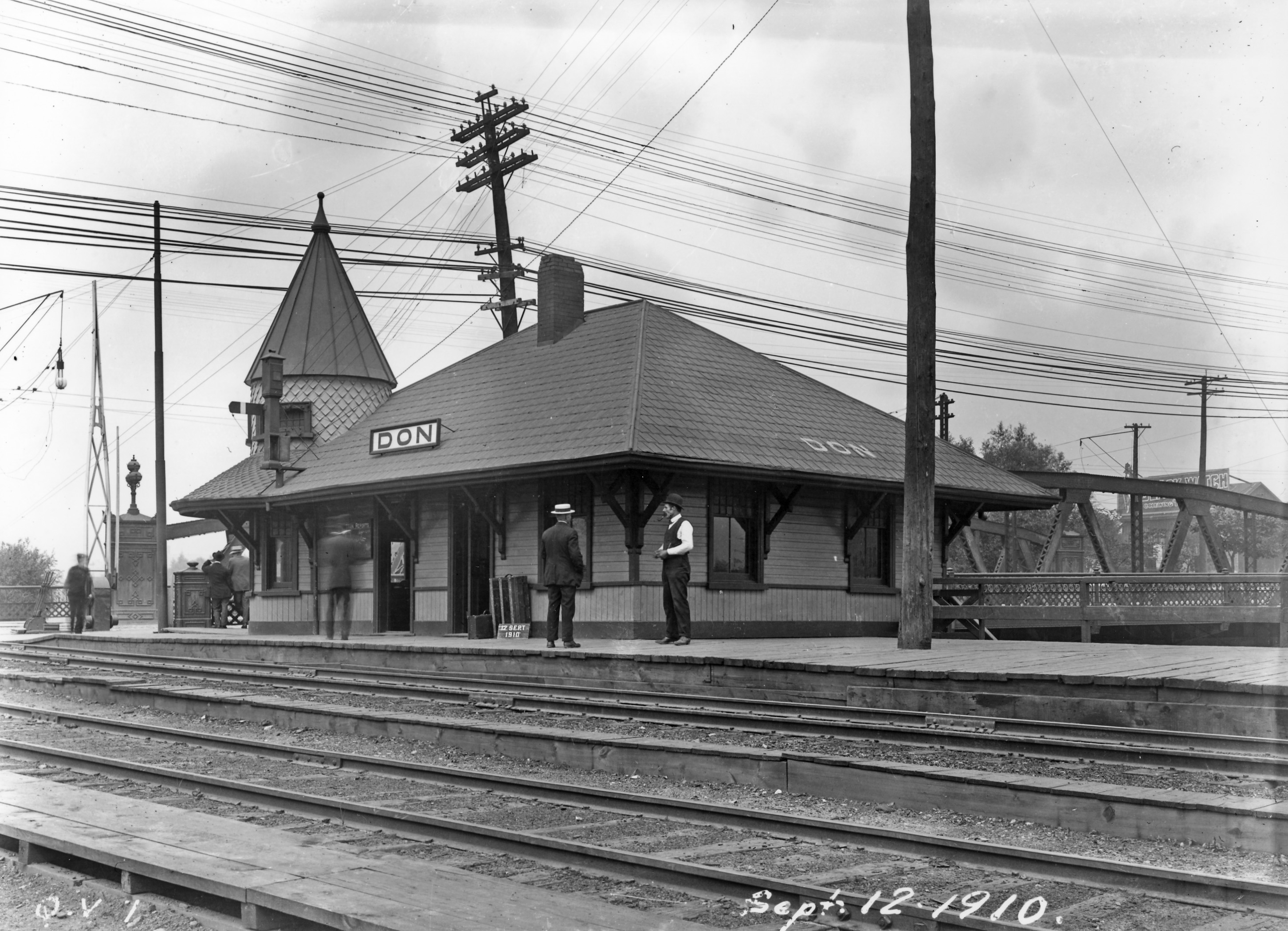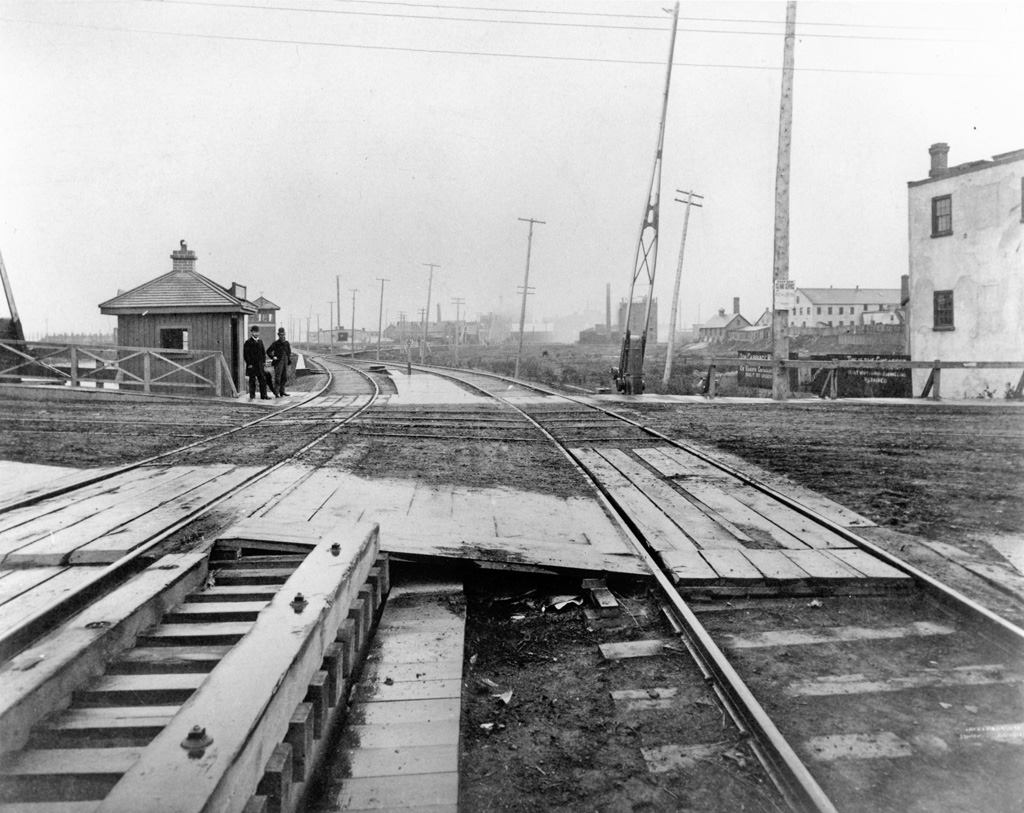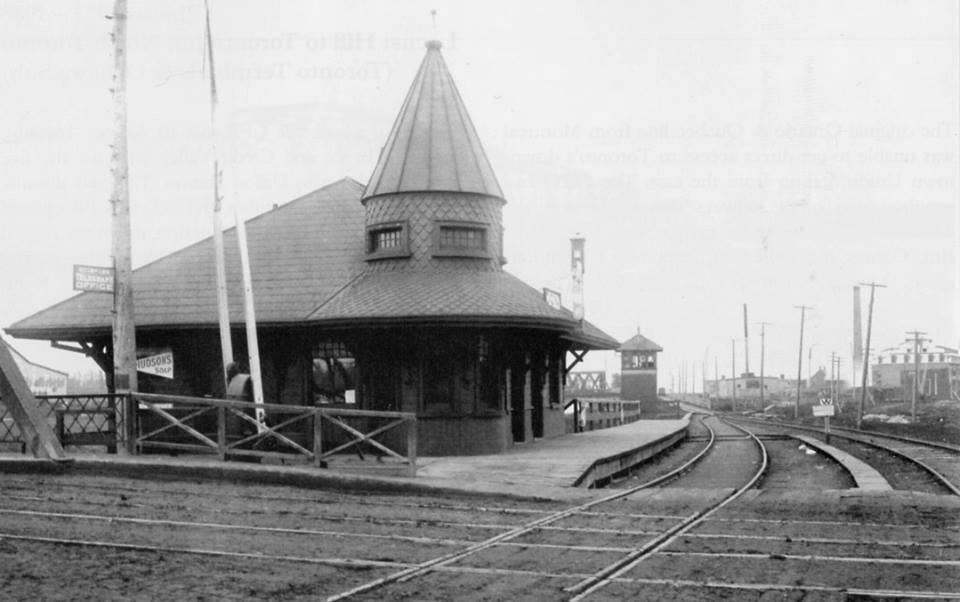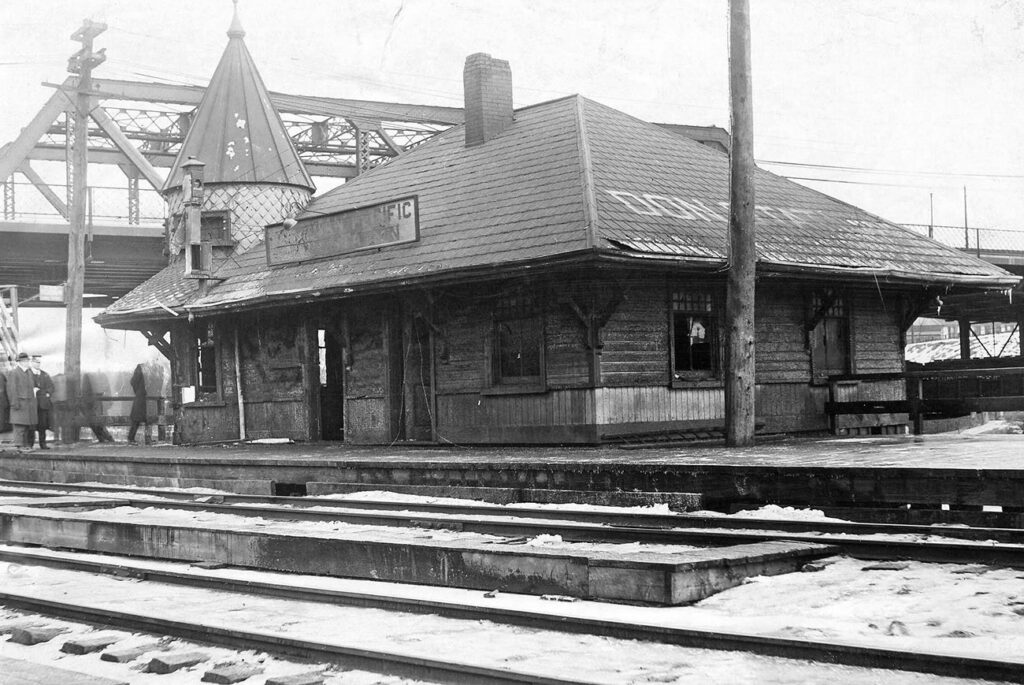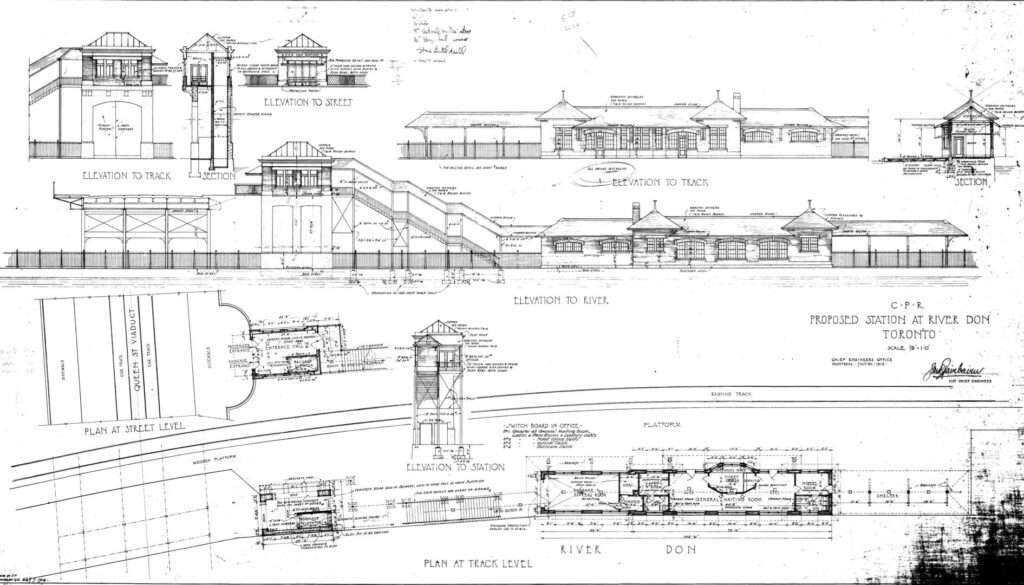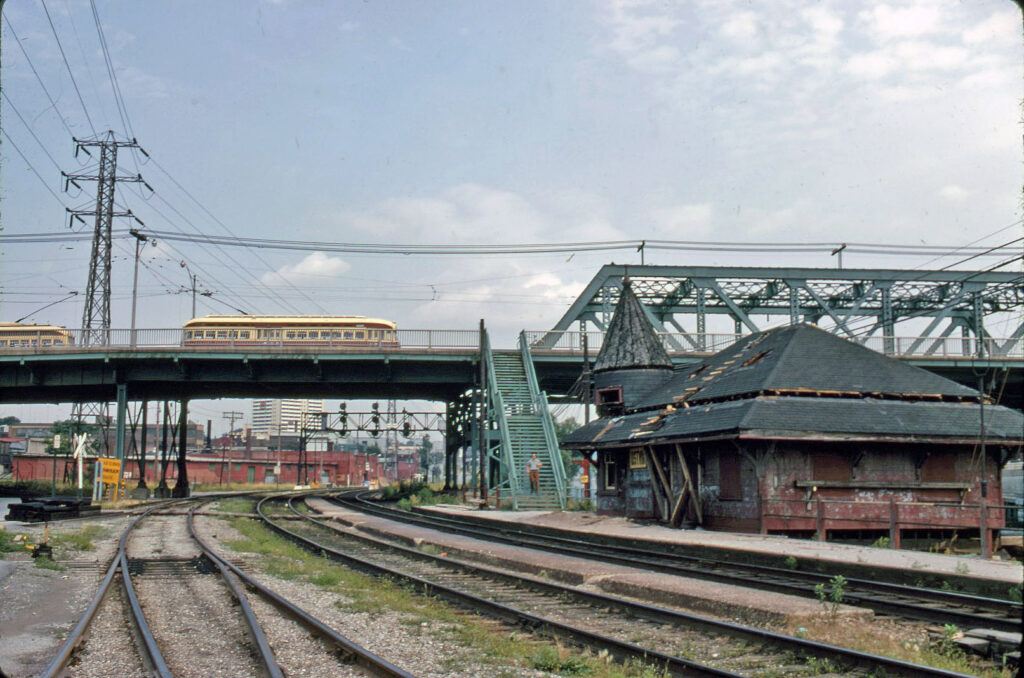The Nine Lives of Don Station
Despite serving as a permanent fixture of Roundhouse Park today, there were several instances in Don Station’s history where its fate was not so certain. Whether it be surviving two fires or the 1914 assassination of Archduke Franz Ferdinand, there were several improbabilities that directly or indirectly saved the station from destruction. Below, we will explore the numerous events in Don Station’s history where its loss was prevented against all odds.
Introduction
The Canadian Pacific Railway gained a foothold in Toronto just a few years after its incorporation in 1881. However, the configuration of its tracks initially required incoming and outgoing trains to reverse through Parkdale. This was an especially dangerous maneuver at the time since most of the roads crossed the railway at grade through that part of the city. Construction of a rail connection between the Canadian Pacific line at Leaside and the Union Station Rail Corridor began in 1888. The Toronto Belt Line Railway had similarly begun construction two years later in 1890, with both planning to occupy the western bank of the lower Don River. The two lines would ultimately run parallel to one another, crossing at grade just south of Queen Street. Canadian Pacific began stopping their trains at the Belt Line’s passenger shelter at Queen Street on May 17th, 1892, as passengers found it more convenient to hop on a streetcar to go downtown than stay on a train the rest of the way to Union Station.
After service over the Belt Line ceased in 1894, Canadian Pacific would seek to replace the shelter at Queen Street with a more suitable structure. The Don Station we know today was opened in the same spot on October 19th, 1896. Its location on the outskirts of downtown proved to be convenient for those living in the city’s east end streetcar suburbs, and ultimately helped to handle overflow from the overcrowded Union Station.
Narrowly Escaping Destruction
Don Station’s first brush with death was a fire which occurred within a couple of years of its opening. This was explicitly referenced in the notes of CPR company photographer Joseph Heckman while he was documenting the entire CPR system in 1898. A second fire occurred after 1911 and damaged the exterior significantly in some areas, but the building otherwise remained intact. Our volunteers found evidence of these while restoring the station ahead of the museum’s grand opening. For Don Station to survive one of these fires would have been impressive enough, but the fact it survived two was nothing short of miraculous. Considering the building is made entirely of wood and the inferior firefighting technology that was available at the time, one wonders how any part of the station could have been left unscathed.
After already cheating death multiple times, it seemed as though time would finally catch up with Don Station. During the first two decades of the 20th century, railways in Canada were in the process of upgrading a vast amount of their infrastructure. Countless passenger stations were replaced or enlarged during this period, often involving the removal of their older and inadequate predecessors. New standard designs were drawn up by Canadian Pacific’s chief engineers’ office, and many of these were built en masse in a copy-paste fashion within the Greater Toronto Area. During this same period, Don Station was seeing more passenger trains per day than it ever had before. Passengers were already complaining that the station’s platform was too short by nearly 100 feet in 1898. From Canadian Pacific alone, service had more than doubled from six trains per day in 1899 to fourteen per day by the 1910’s. Once the Canadian Northern Railway began to serve Don Station in 1906, there would be four additional departures per day on top of those already offered by Canadian Pacific. Even more would stop there with the opening of the Canadian Northern line to Trenton in 1911.
On February 13th, 1911, Canadian Pacific Railway vice-president David McNicoll presented the Toronto Board of Control with a list of improvements that his company had planned for its facilities in the city over the next several years. Among these was the planned double tracking of the Don Branch as well as the construction of a new Don Station. On July 20th, 1914, plans for this new station were drawn by Canadian Pacific’s chief engineers’ office. The new station was to be built on the north side of the Queen Street bridge opposite the original station site. A staircase descending from the bridge sidewalk was included in the plan, much like the staircase adjacent to the existing station. However, this is where similarities between the two stations ends. The stairs of the new station were to have a canopy protecting pedestrians from the elements, and it was directly connected to the interior of the station building instead of ending on the platform. There was to be separate passenger and baggage entrances with a baggage elevator immediately adjacent to the staircase. The station building itself was incredibly narrow due to the small sliver of land it rested on between the tracks and the Don River, with the building measuring 105 feet long and only 18 feet wide. Otherwise, the building’s design quite closely resembled Canadian Pacific’s station in Westmount outside of Montreal. The sturdy brick exterior was to give way to a large general waiting room adjacent to a smaller ladies’ waiting room. Other rooms included the ticket office, baggage and express room, and a lavatory. A canopy was to extend outward from the north side of the building to provide protection from the elements.
Just over two weeks after the above plans were created, Canada made its entry into World War One on August 4th, 1914. The war effort would siphon untold materials and manpower from the railway industry and prevent many of its construction projects from moving forward. Passenger service to Don Station would never increase beyond the point it reached just before and immediately following the war, and the subsequent decline caused by the Great Depression ensured a replacement for Don Station would never come. On April 2nd, 1933, Canadian Pacific and Canadian National entered an agreement to pool their train service between Montreal, Toronto, and Ottawa. This agreement resulted in the elimination of several Canadian Pacific passenger trains between those points, rerouting most remaining ones away from Don Station altogether. Even though the end of the Great Depression was marked by the start of World War Two in 1939, the pool train agreement persisted until 1965. It was only due to the forward thinking of local community members that Don Station survived after it was closed in 1968. It was moved to Todmorden Mills where it once again narrowly escaped destruction, this time by arsonists who destroyed an adjacent caboose.
In 2008, Don Station was moved once more to Roundhouse Park ahead of the Toronto Railway Museum’s 2010 grand opening. Over the next two years, the station was painstakingly restored by museum volunteers with help from John Mellow, a former railway employee who had previously worked in the station as a telegrapher and train order operator. Now in its new role as our gift shop and terminus for our miniature railway, we are enormously grateful that Don Station was able to overcome so many obstacles to get here.
Written by Adam Peltenburg
References
Boles, Derek. 2009. Toronto’s Railway Heritage. Arcadia Publishing.
The Viaduct, Esplanade and Don Improvement Questions, Letter from the President of the Canadian Pacific Railway Co. to the Mayor of Toronto. 1890. https://www.canadiana.ca/view/oocihm.25309/12.
The Toronto World. 1899. “The C. P. R. Don Station.” June 12, 1899. https://www.canadiana.ca/view/oocihm.N_00367_18990612/10.
The Toronto World. 1911. “C.P.R. Plans To Spend $7,000,000 In Toronto.” February 14, 1911. https://www.canadiana.ca/view/oocihm.N_00367_19110214/9.
“Pool Trains: A Pictorial Study of the Toronto-Montreal and Toronto-Ottawa Pooled Passenger Train Services.” n.d. Upper Canada Railway Society Bulletin, no. 52. https://bzglfiles.s3.ca-central-1.amazonaws.com/u/131959/13b9f6092e6563d49b1309b7fe3582975c19d105/original/ucrs-bulletin-52-435.pdf?response-content-type=application%2Fpdf&X-Amz-Algorithm=AWS4-HMAC-SHA256&X-Amz-Credential=AKIA2AEJH4L527DJJBYE%2F20230321%2F.


